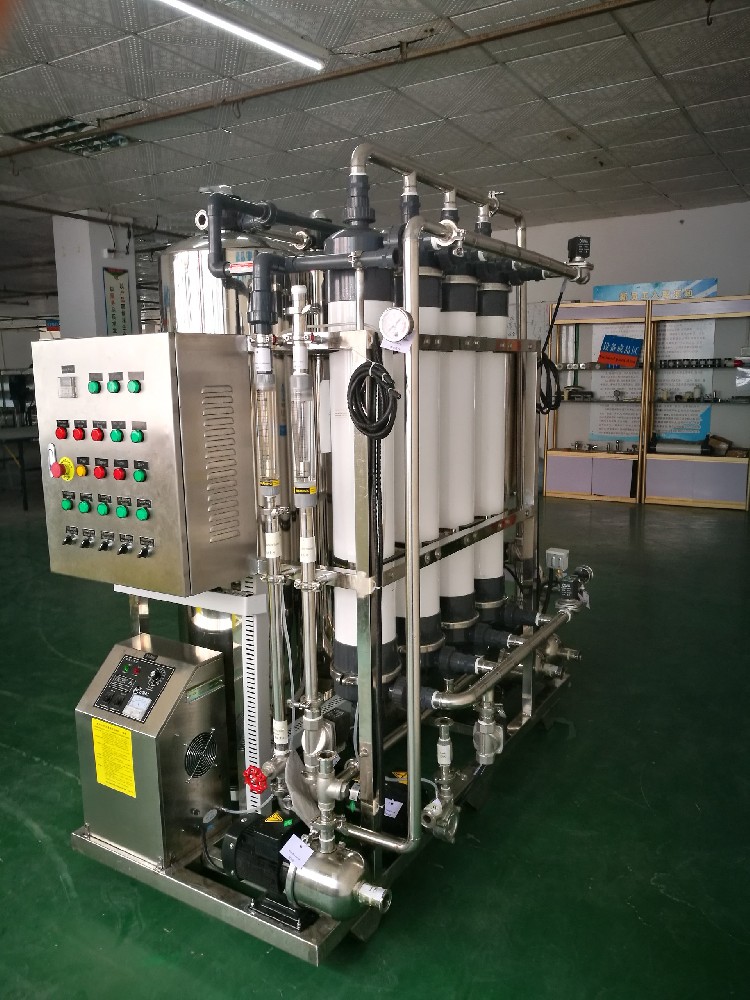
Wechat/Whatsapp:
+8613798883773

Wechat/Whatsapp:
+8613798883773
HYWATER Water filtration system


Ultra-filtration system Blockage cause During the operation of the ultra-filtration system, the fouling of the membrane is the greatest problem, and it is also one of the most common problems. The common phenomenons of the fouling are: the productwater flow decreases, the quality of the product water deteriorates, and at the same time, the inlet water pressure increases. The causes for the fouling of the ultra-filtration system as below: (1) The temperature of inlet water inlet water is too low, resulting in increased operating resistance. (2) The excessive bacteria and algae in the raw water, or the SDI value of raw water is too high. (3) The flow of inlet water inlet water increases, which exceeds the designed capacity of system If there is the RO system be designed after UF system, following situation will be occurred: (1) The product water quality deteriorates, the SDI value becomes higher or exceeds the standard, and the color of the SDI value test diaphragm becomes darker; (2) The reverse osmosis membrane is fouled and blocked, resulting in a rapid decrease in the product water capacity. (3) When the UF is seriously polluted, a layer of "sponge" will be formed in the UF. During chemical cleaning, the residual NaOH or sodium hypochlorite cannot be rinsed in time and will be released slowly, which will bring about the subsequent RO system. Serious harm. Therefore, in the ultra-filtration operation, the general design includes forward flushing, back-flushing and conventional on-line automatic pH adjustment soaking cleaning, usually a back-washing for 20min to 1h; a low pH or high pH cleaning for more than 8h, and adjusting the pH for cleaning, Generally, 10min soaking is used, and then physical washing is performed. When soaking with lye, a certain amount of NaClO is often added to enhance the cleaning effect. There are two types of membrane filtration modes: dead-end and cross-flow. Dead-end filtration, also known as full-flow filtration, means that the liquid flow is perpendicular to the membrane surface. After the filtrate passes through the membrane, all the retentate is deposited on the membrane surface. This filtration mode has a higher probability of clogging and is generally suitable for water with low turbidity and low suspended solids content. The cross-flow filtration can realize the continuous operation of the ultra-filtration system, and can adapt to the scale requirements of processing large flow. In cross-flow filtration, the water flows parallel to the surface of the filter membrane, and a large shear force can be formed on the surface of the filter membrane, causing the membrane pollutants to be in suspension all the time, reducing the influence of concentration polarization and reducing particles and solutes in the membrane. Therefore, the cross-flow mode has strong adaptability to the water quality. In addition, increasing the cross-flow velocity can also increase the critical flux. When the TMP is increased to a certain level, it cannot be recovered by cross-flow and back-washing, and the flux of the membrane can be recovered by chemical cleaning. Through the contact with a certain dose of chemical agents, and under the action of high-flow cleaning, the contaminants on the membrane surface and membrane pores can be removed, thereby restoring the flux of the membrane. Most ultra-filtration system uses hollow fiber membrane fibers, and it is a common phenomenon that a small amount of broken fibers occurs during operation. The broken wire is generally caused by various reasons such as membrane wire fouling and recoil force. There are tens of thousands of membrane filaments in one element, and a small amount of broken filaments will not immediately affect the water quality, so it is not easy to detect during operation. However, once a change in the quality of the product water is found, the exact location of the broken wire should be quickly determined to take corresponding measures. The treatment of broken filaments is generally to find the damaged membrane filaments and block them. If the broken filaments or the blocked membrane filaments increase to a certain level (greater than 10%), the entire element needs to be replaced. More inquiries related to Ultra-filtration system please contact: Mob& Wechat& WhatsApp: (+86)13544774483 Email: sales010@water-sy.com We will provide high-quality, all-round comprehensive professional services for project consulting, system design, manufacturing, installation and commissioning, personnel training, etc
